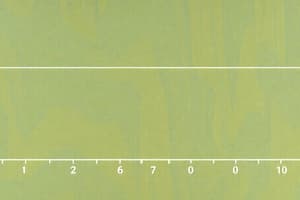Podcast
Questions and Answers
What do the dimensions of a physical quantity represent?
What do the dimensions of a physical quantity represent?
- The numerical value of the quantity
- The units used to measure the quantity
- The magnitude of the quantity
- The powers to which fundamental units are raised (correct)
Dimensional analysis can be used to find dimensionless constants.
Dimensional analysis can be used to find dimensionless constants.
False (B)
What is a dimensional formula?
What is a dimensional formula?
A dimensional formula represents the relationship between a derived unit and fundamental units using exponents.
A dimensional equation expresses a physical quantity in terms of its ______.
A dimensional equation expresses a physical quantity in terms of its ______.
Match the following applications with their description:
Match the following applications with their description:
Which of the following is NOT a fundamental SI unit?
Which of the following is NOT a fundamental SI unit?
Systematic errors in measurement are unpredictable and vary with each measurement.
Systematic errors in measurement are unpredictable and vary with each measurement.
What is the SI unit of temperature?
What is the SI unit of temperature?
The unit of luminous intensity is the ______.
The unit of luminous intensity is the ______.
Match the physical quantity to its corresponding derived unit:
Match the physical quantity to its corresponding derived unit:
Which of the following statements is true about measurement?
Which of the following statements is true about measurement?
Derived units are defined independently of other units.
Derived units are defined independently of other units.
Name two common systems of units besides SI.
Name two common systems of units besides SI.
Flashcards
Measurement
Measurement
The comparison of an unknown quantity with a known standard.
System of Units
System of Units
A collection of units for measuring different physical quantities.
SI Units
SI Units
A widely used system of units defined by seven fundamental units.
Fundamental Units
Fundamental Units
Signup and view all the flashcards
Derived Units
Derived Units
Signup and view all the flashcards
Measurement Errors
Measurement Errors
Signup and view all the flashcards
Significant Figures
Significant Figures
Signup and view all the flashcards
Systematic vs Random Errors
Systematic vs Random Errors
Signup and view all the flashcards
Dimensions of Physical Quantity
Dimensions of Physical Quantity
Signup and view all the flashcards
Dimensional Analysis
Dimensional Analysis
Signup and view all the flashcards
Dimensional Formula
Dimensional Formula
Signup and view all the flashcards
Dimensional Equation
Dimensional Equation
Signup and view all the flashcards
Applications of Dimensional Analysis
Applications of Dimensional Analysis
Signup and view all the flashcards
Study Notes
Introduction to Units and Measurement
- Physics studies the fundamental laws of nature and their observable effects in the universe.
- Measurement is essential in physics, involving comparing an unknown quantity to a known standard of the same type.
- Every measurement requires a unit for meaning.
- A system of units is needed for consistent communication of scientific results across labs and countries.
System of Units
- A system of units groups units for different physical quantities.
- Fundamental units are defined by international standards based on physical phenomena.
- Common systems include SI, CGS, and FPS.
- Systems are interconnected, convertible through defined factors.
SI Units
- The SI system is globally used in science and engineering.
- The SI system uses seven fundamental units:
- Length (meter, m)
- Mass (kilogram, kg)
- Time (second, s)
- Electric current (ampere, A)
- Temperature (Kelvin, K)
- Amount of substance (mole, mol)
- Luminous intensity (candela, cd)
Fundamental and Derived Units
- Fundamental units are defined independently.
- Derived units combine fundamental units.
- Examples:
- Velocity (m/s)
- Acceleration (m/s²)
- Force (kg m/s²)
- Work (Joule, J)
- Examples:
Measurement Errors
- Measurement errors are unavoidable.
- Error sources include instrument limitations, environmental factors, and human mistakes.
- Errors are categorized into:
- Systematic errors: consistent errors.
- Random errors: unpredictable variations.
- Careful experimental design, instrument selection, and detailed analysis minimize errors.
Significant Figures
- Significant figures indicate the confidence level of a measurement.
- There are rules for determining the number of significant figures.
- There are rules for calculations involving varying significant figures.
- Results should use the correct number of significant figures to avoid misleading conclusions.
Dimensions of Physical Quantities
- Dimensions of a physical quantity are the powers to which fundamental units are raised.
- Dimensional analysis is used to check equation correctness and deduce relationships.
- Dimensional analysis can derive and verify formulas.
- It cannot determine dimensionless constants.
Dimensional Formulae
- Dimensional formulae show the relationship between derived and fundamental units using exponents.
- Understanding dimensional formulae is crucial for solving and analyzing physics relationships and problems.
- It aids in verifying the consistency of physics equations.
Dimensional Equations
- A dimensional equation expresses a physical quantity in terms of fundamental units.
- A dimensional equation only includes fundamental units.
- Understanding dimensional equations is important for verifying physics formulas.
Applications of Dimensional Analysis
- Dimensional analysis verifies the dimensional consistency of equations.
- It helps in deriving relationships between quantities.
- It's used to find the dimensions of constants and derived quantities.
- It's employed in determining if a given equation is valid.
Studying That Suits You
Use AI to generate personalized quizzes and flashcards to suit your learning preferences.




